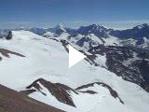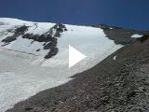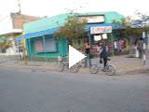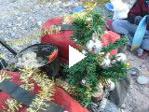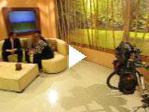While in Santiago, I was surprised how many people complained about the summer heat (it is summer and Santiago as far south as central California is north). Every morning, my host father would tell me how warm it was going to be that day (‘today it is going to be 95 degrees!’), as if warning me to keep low while out on the streets.
One of the consequences of global warming is more heat waves. Of course, another consequence is fewer cold spells, and it has been hard for me to say this is necessarily bad. I conducted a few interviews with people on the street in Santiago (recorded in high-resolution video which I can’t post) asking what they thought of the heat, and what they would think if every day in the summer were 5 degrees F warmer. I also then asked if the heat or the cold bothered them more.
Most people complained about the heat, but they were more or less split over whether the heat of summer or cold of winter bothered them more. One man, who was from Brazil and working in the park, laughed “It’s not hot here! Come to Brazil — it is hot in Brazil!” On the other hand, though, an older man told me he had high blood pressure and worried a great deal about his health on such hot days. Almost all, except for the Brazilian, said that hotter temperatures in the summer would greatly bother them.
Is this a real problem, or can we just get used to the heat, and will it be nice to have warmer winters? I myself have wondered this, but, reading through some of the results of heat waves, it really does appear that a warmer earth will be bad for our health. When Europe had a well-publicized heat wave in 2003, tens of thousands of people, mostly elderly, died. There is absolutely nothing comparable to this in cold waves in modern times. Also, warmer temperatures increase smog production, which is another threat to urban health. One study estimated that in California (which has a climate very similar to middle Chile), by mid century, global warming will result in two to three times as many heat-related deaths.
Clearly, there are ways to adapt to hotter temperatures. One is simply being used to the heat (Brazilians do better than Chileans, for instance). One of the best methods, though, and one which would have saved many lives in the European heat wave, is to use more air conditioning. This, of course, uses incredible amounts of electricity, and unless we find non-fossil fuel sources of energy, will only make global warming worse.





